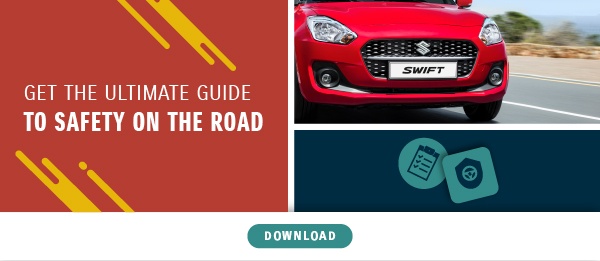When it comes to vehicle safety, we all want to know we’ve chosen the best. The trick is identifying which is ‘the best’ for you specifically. If you’re doing 5 km in the city, you need slightly different safety requirements than someone who does 20 km on dirt roads every day. You need to know the difference between vehicle safety hype and reality in order to make the right decision for you.
South Africa, and much of the rest of Africa, has a very different transport safety landscape than Europe, Japan or China–where most vehicles are manufactured. For the purposes of this post, we’ll refer to ‘mobility safety’ because our local safety requirements stretch much further than the safety features found inside your vehicle.
In Europe, many people look down on vehicles that have a one- or two-star safety rating (and that’s not a bad thing, vehicle safety must always be improved), but in South Africa, we must compare a lower-ranked entry-level vehicle with the alternatives. Consider the below statistics from the World Health Organisation (WHO):
-
About 1.25 million people die each year as a result of road traffic crashes.
- 90% of the world's fatalities on the roads occur in low- and middle-income countries, even though these countries have approximately 54% of the world's vehicles.
- Nearly half of those dying on the world’s roads are “vulnerable road users”: pedestrians, cyclists, and motorcyclists.
South Africa is considered a low-income country, and fewer than a third of SA households own a vehicle, which means the majority of South Africans make use of alternative transport.
- Walking - possibly one of the most dangerous activities for South Africans just looking to get to work on time. According to a Stats SA 2021 report, 17.4 million people walk to their destination on a daily basis (school, work, etc). We have almost no areas allocated specifically to pedestrians and we have one of the highest pedestrian fatality figures in the world. https://www.who.int/data/gho/data/themes/road-safety.
Keep in mind that this also applies to commuters who use public transport because, in most cases, people have to walk to taxi ranks or bus stations. - Cycling - this is just as dangerous as walking. Due to lack of safe cycling lanes, poor enforcement of road laws, and a general ‘don’t care’ attitude of our road users, cycling is unfortunately not a safe mode of daily transportation in South Africa. There are no recent statistics on cycling, as they are combined with pedestrian statistics in SA
- Public Transport - every South African knows that our public transport system is notoriously unreliable and incredibly dangerous. Every day there is a new story about taxis involved in accidents due to speeding or ignoring rules of the road. Many taxis and buses are also poorly maintained, which puts them at higher risk of being involved in an accident.
According to the Stats SA survey "There has been a general increase in households who used taxis (from 9.8 million to 11.4 million). However, a significant decrease was recorded in the number of households who used a bus (from 2.9 million to 2.1 million) and a train (1.4 million to 0.5 million) as their preferred mode of transport." This means that more and more people are turning to unsafe public transport because trains and buses are too unreliable.
The SA Safety perspective
When you consider all of the above factors, an entry-level vehicle makes much more sense in terms of safety than the alternatives. A vehicle with a comparatively ‘low’ rank on the European vehicle safety scale, is still a much safer option than walking, cycling, or using public transport in South Africa.
The fact is: achieving one or two stars in global safety tests does not make a vehicle unsafe. There is a big misconception that a low ranking means you are climbing into an unsafe vehicle. On the contrary, entry-level vehicles still have all the essential safety features such as ABS brakes, airbags, and seatbelts. Read this blog post for more detail on local vehicle safety standards.
An entry-level vehicle also puts a decent ‘buffer’ between you and the world. All Suzuki entry-level vehicles are designed with a ‘safety cage’ that envelopes passengers giving them as much protection as possible in the event of an accident. If you’re going to be hit by another vehicle, would you rather be on a bicycle or in an entry-level vehicle?
We need to start understanding this perspective in SA: choosing an affordable vehicle over spending the same money on public transport is still, for the foreseeable future, the safest mobility choice you can make.
Therefore, when you are next browsing entry-level vehicles, remind yourself of the alternatives. A well-maintained, affordable vehicle will always be the safer choice on local roads.
To learn more about car safety, download and read the Ultimate Car Safety Guide.



